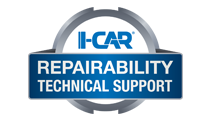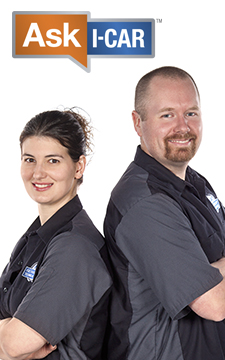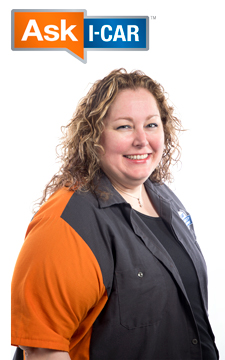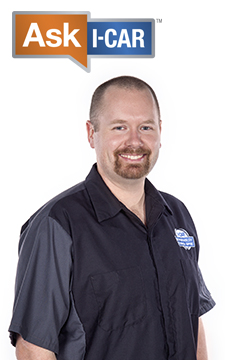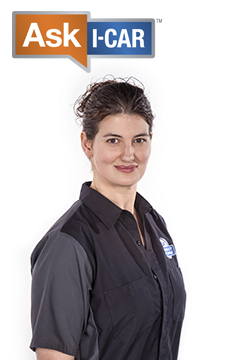OEM Restraints System Part Replacement Search
2025 Chevrolet Equinox EV
Share:
|
DISABLE PROCEDURE AND TIME (Always Check Service Manual)
1. Turn the steering wheel so that the vehicle wheels are pointing straight ahead.2. Place the ignition in the OFF position.
3. Wait 2 minutes before working on the system.
• Warning: The SDM may have more than one fused power input. To ensure there is no unwanted SIR deployment, personal injury, or unnecessary SIR system repairs, remove all fuses supplying power to the SDM. With all SDM fuses removed and the ignition switch in the ON position, the AIR BAG warning indicator illuminates. This is normal operation, and does not indicate a SIR system malfunction.
4. Locate and remove the fuse(s) supplying power to the Restraints Control Module. Refer to SIR Schematics.
5. Wait 2 minutes before working on the system.
REV: 01/2025
PARTS THAT MUST BE REPLACED FOLLOWING A DEPLOYMENT
After a collision with frontal air bag deployment, replace the following components. If you detect any damage to the mounting points or mounting hardware, repair or replace the mounting points and mounting hardware as needed:• Driver steering wheel air bag [AIRBAG,STEERING WHEEL; AIRBAG,KNEE BOLSTER]
• Passenger instrument panel air bag, if deployed [AIRBAG,INSTRUMENT PNL]
• Inflatable Restraint Sensing and Diagnostic Module (SDM), if the Inflatable Restraint Sensing and Diagnostic Module has set DTC B0052 and will not clear [MODULE,AIRBAG CONTROL]
• Front and/or side impact sensors [AIRBAG SENSOR,FRONT; AIRBAG SENSOR,FRT DOOR; AIRBAG SENSOR,QTR PANEL]
• Driver/Passenger seat side air bag, if deployed
• Seat back cover if side seat air bag is deployed
• Driver/Passenger seat belt anchor and/or retractor pretensioners
• Replace any seat belt system that was in use during the collision serious enough to deploy any automatic restraint device such as air bags and seat belt pretensioners
After a collision involving driver/passenger side seat air bag deployment, replace the following components:
• Left/right side impact sensors on the side of the impact [AIRBAG SENSOR,FRT DOOR; AIRBAG SENSOR,QTR PANEL]
• Left/right roof rail air bag on the side of the impact. [AIRBAG, ROOF]
• Deployed [AIRBAG,FRONT SEAT]
• Inflatable Restraint Sensing and Diagnostic Module (SDM), if the Inflatable Restraint Sensing and Diagnostic Module has set DTC B0052 and will not clear [MODULE,AIRBAG CONTROL]
• Inflatable Restraint Seat Belt Anchor and/or Retractor Pretensioner
• Driver or passenger seat back cushion cover replacement
• Replace any seat belt system that was in use during the collision serious enough to deploy any automatic restraint device such as air bags and seat belt pretensioners
After a collision involving driver/passenger Seat Belt Retractor or Anchor Pretensioner deployment, replace the following components:
• Driver and Passenger Inflatable restraint seat belt anchor pretensioner and/or retractor pretensioner
• Inflatable Restraint Sensing and Diagnostic Module (SDM), if the Inflatable Restraint Sensing and Diagnostic Module has set DTC B0052 and will not clear [MODULE,AIRBAG CONTROL]
• Replace any seat belt system that was in use during the collision serious enough to deploy any automatic restraint device such as air bags and seat belt pretensioners. This not only includes seat belt systems in use by people of adult size, but seat belt systems used to secure child restraints, infant carriers and booster seats, including LATCH system and top tether anchorage.
Do NOT replace single seat belt system components in vehicles that have been in a collision as described above. Always replace the entire seat belt system with the buckle, guide
and retractor assembly, which includes the latch and webbing material.
PARTS THAT MUST BE INSPECTED AND REPLACED IF DAMAGED
After any collision, inspect the following components as indicated. If you detect any damage, replace the component. If you detect any damage to the mounting points or mounting hardware, repair the component or replace the hardware as needed:• Steering Column • Refer to Steering Column Accident Damage Inspection in Steering Column and Wheel.
• Steering Wheel Airbag • If not deployed, visually inspection the top trim cover of the airbag module for deformation, distortion, or indentations as a result of damage. Replace if found.
• Steering Wheel Air Bag Coil and Coil Wiring Pigtail • If deployed, inspect for melting, scorching, or other damage due to excessive heat.
• Front and/or Side Impact Sensors • Impact Sensor Replacement Guidelines:
The impact sensor replacement policy requires replacing sensors in the area of the accident damage. The area of accident damage is defined as the portion of the vehicle which is crushed, bent, or damaged due to a collision. If the impact sensor or the mounting structure of the impact sensor is damaged, the impact sensor must be replaced.
Replace the impact sensor whether or not the air bags have deployed.
Replace the impact sensor even if it appears to be undamaged.
Impact sensor damage which is not visible, such as slight bending of the mounting bracket or cuts in the wire insulation, can cause improper operation of the SIR system. Do not try to determine whether the impact sensor is undamaged, replace the impact sensor. Also, if you follow a diagnostic trouble code (DTC) procedure and a malfunctioning impact sensor is indicated, replace the impact sensor.
• Instrument Panel Airbag • Visually inspection the top trim cover of the airbag module for deformation, distortion, or indentations as a result of damage. Replace if deformation, distortion, or indentations are found.
• Knee Airbag • Visually inspection the top trim cover of the airbag module for deformation, distortion, or indentations as a result of damage. Replace if deformation, distortion, or indentations are found.
• Door trim assembly • On Side of Impact. Visually inspect door trim assembly for deformation or distortion as a result of damage. Replace if deformation or distortion is found.
• Roof Rail Airbag • On Side of Impact. If not deployed, visually inspect roof trim for deformation or distortion as a result of damage. Replace if found.
• Seat Back Cover • If Side Air Bag(s) Deployed. If not deployed, visually inspect seat back cover and top trim cover of the airbag modules for deformation or distortion as a result of damage. Replace if deformation or distortion is found.
• Seat Side Air Bag • If Deployed
• Seat Side Air Bag Mounting Points and Hardware • If Side Air Bag(s) Deployed
• Seat Cushion Side Covers and Switches • On Side of Impact
• Seat Belt System • This applies to seat belt systems in use by people of adult size, seat belt systems used to secure child restraints, infant carriers, and booster seats, including LATCH system and top tether anchorages.
Do NOT replace single seat belt system components in vehicles that have been in a collision as described above. Always replace the entire seat belt system with the buckle, guide, and retractor assembly, which includes the latch and webbing material.
Replace any seat belt system that was in use during the collision serious enough to deploy any automatic restraint device such as air bags and seat belt pretensioners.
Replace any seat belt system that has torn, worn, or damaged components.
Replace any seat belt system if you observe the words "REPLACE" or "CAUTION", or if a yellow tag is visible. Do not replace a seat belt if only the child seat caution label is visible.
Replace any seat belt system if you are doubtful about its condition.
• Seat Belt Anchor and/or Retractor Pretensioners Mounting Points and Hardware • Visually verify the seat belt retractor units are securely attached and the seat belt anchor bolts are secure.
• Inflatable Restraint Sensing and Diagnostic Module (SDM) or Restraints Control Module (RCM) • Replace only if module has set DTC B0052 (or other related SDM DTCs) or DTC B1A33 (or other related RCM DTCs) and will not clear.
| Additional Information |
*This matrix does not currently contain all production vehicles sold in the United States. The contents were developed in cooperation with AudaExplore, a Solera company. The contents are based on the information available at the time of publication. Updates and additions will be posted as they become available. To ensure that you are using the most recent information, always refer to vehicle maker technical information.
